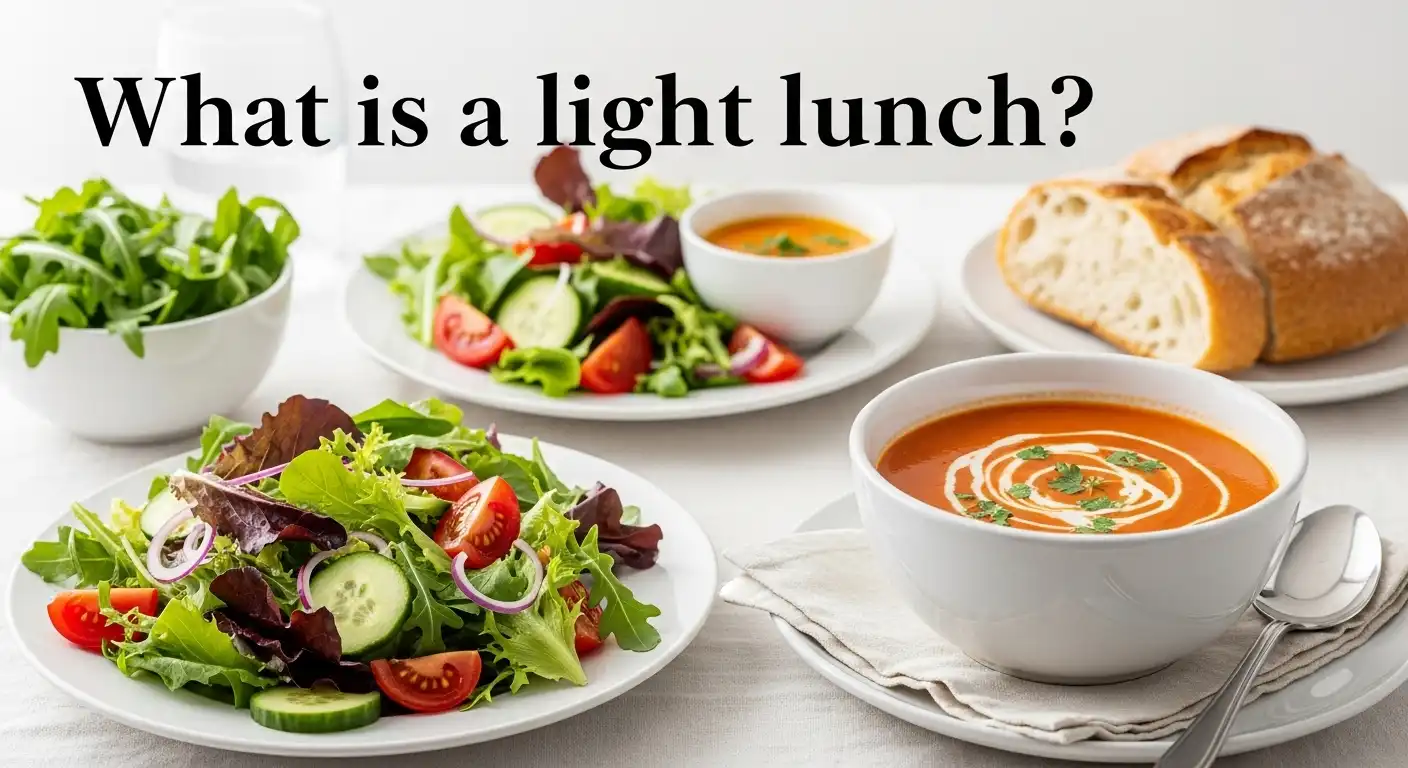What Exactly Is a Light Lunch? Your Guide to Lighter Midday Meals
The midday meal: it’s a crucial refueling point in your day. But for many, lunch comes with a dilemma. Eat too little, and you’re starving by 3 pm. Eat too much, and you’re fighting off the dreaded “food coma,” struggling to focus for the rest of the afternoon. Enter the “light lunch”—a “strategy many people adopt for better productivity, digestion, and sustained energy. But what exactly does “light” mean in this context?
It’s more than just a small portion. A light lunch is about smart, balanced fueling that provides necessary nutrients without weighing you down.
Here’s a breakdown:
What Defines a Light Lunch?
- Size and Calorie Count (Relative): While there’s no strict calorie rule, a light lunch is typically smaller and less calorically dense than a main dinner meal. The goal isn’t just low calories, but sufficient calories to get you through the afternoon without feeling heavy or overly full. Think satisfying, not stuffed.
- Nutrient Composition: This is key. A truly beneficial light lunch focuses on a balance of
- Lean Protein: Crucial for satiety and muscle repair. Think grilled chicken, fish, beans, lentils, tofu, eggs, cottage cheese, or Greek yogurt.
- Fiber: Found in vegetables, fruits, and whole grains. Fiber aids digestion and helps you feel full for longer, preventing energy crashes.
- Healthy Fats: In moderation, fats from sources like avocado, nuts, seeds, or olive oil provide sustained energy and help absorb vitamins.
- Complex Carbohydrates (in moderation): Whole grains like quinoa, brown rice, or whole-wheat bread provide steady energy, but often in smaller portions than you might find in a heavier meal.
- Ease of Digestion: Light lunches are generally easier for your body to process compared to heavy, rich, or fried foods. This contributes directly to avoiding that post-meal sluggishness.
- Goal-Oriented: The primary goal is sustained energy, focus, and avoiding the “afternoon slump.” It’s about fueling your brain and body efficiently for the next few hours.
Why Choose a Light Lunch? The Benefits
Opting for a light lunch can offer several advantages:
- Increased Productivity: Avoiding the heavy post-lunch slump means you can maintain focus and energy levels throughout the afternoon.
- Better Digestion: Lighter meals are easier on your digestive system, reducing discomfort or bloating.
- Sustained Energy: By focusing on balanced nutrients (especially protein and fiber), you get a steady release of energy rather than a sugar crash followed by a dip.
- Weight Management: For many, a lighter lunch helps manage overall daily calorie intake without feeling deprived, especially if dinner is a more substantial meal.
- Saves Time: Often, lighter lunches are quicker to prepare and eat, fitting better into busy schedules.
Examples of Satisfying Light Lunches:
- Large Salad: Packed with leafy greens, plenty of colorful vegetables, and topped with a source of lean protein (grilled chicken, chickpeas, or tuna) and a light vinaigrette.
- Broth-Based Soup: A vegetable or lentil soup, perhaps with a small piece of whole-wheat bread. (Creamy soups can be heavy).
- Yogurt Parfait: Plain Greek yogurt layered with berries, a small amount of nuts or seeds, and perhaps a sprinkle of granola.
- Cottage Cheese with Fruit or Vegetables: A simple, protein-rich option.
- Leftovers (Portion-Controlled): A smaller serving of a healthy dinner from the night before, focusing on the protein and vegetable components.
- Hummus and Vegetable Sticks: A good source of fiber and healthy fats, paired with cucumber, carrots, bell peppers, etc.
- Rice Cakes or Whole-Wheat Crackers with Toppings: Topped with avocado, smoked salmon, cottage cheese, or a small amount of nut butter.
- A Small Grain Bowl: A base of quinoa or brown rice with roasted vegetables and a small portion of protein.
Making a Light Lunch Feel Satisfying
Simply eating a small amount won’t cut it if you’re left feeling hungry later. Here’s how to make a light lunch truly satisfying:
- Prioritize Protein & Fiber: These are your satiety powerhouses.
- Include Healthy Fats: They add flavor and help you feel full.
- Hydrate: Drink water before and during your meal. Sometimes thirst is mistaken for hunger.
- Eat Mindfully: Pay attention to your meal, chew slowly, and notice your body’s hunger and fullness cues.
- Add Volume with Veggies: Non-starchy vegetables add bulk and nutrients without adding many calories.
The Takeaway
A light lunch isn’t about deprivation; it’s about strategic fueling. It’s choosing foods that will give you sustained energy, support your focus, and leave you feeling comfortable and ready to tackle the rest of your day, rather than fighting off a food coma. Experiment with different combinations of lean protein, fiber-rich vegetables, and healthy fats to find the light lunch that keeps you feeling energized and productive.
